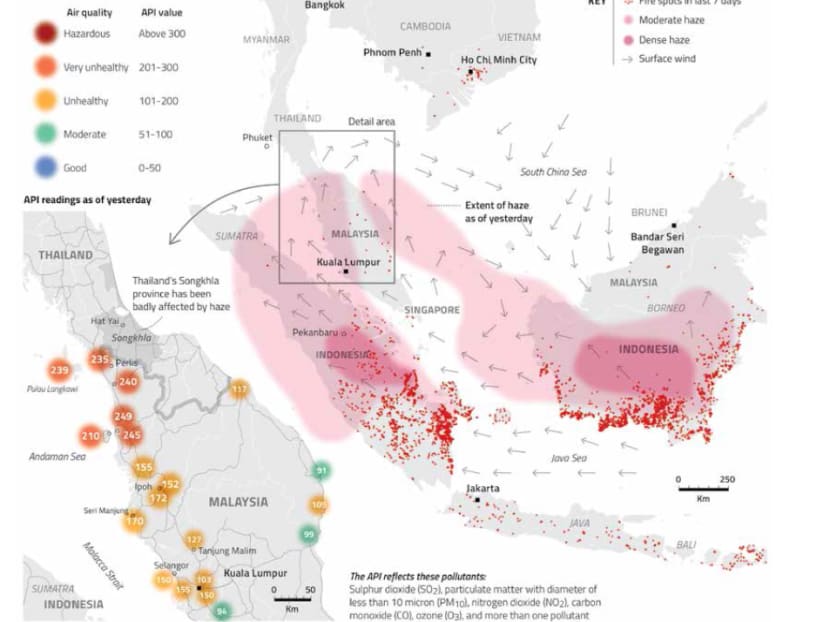In 2015, Singapore experienced an extreme haze event with PM2.5 levels reaching 471 (Today Online, 2015A), forcing schools and outdoor activities to be halted. In Singapore, most of us are familiar with haze given that it is almost an annual event. However, did you know that this immensely pollutive event is due to the production of food products? To be more specific, the production of palm oil.
Haze can be defined as “the existence of dry particles and smoke in the atmosphere when relative humidity is considered lower than usual (<80%) and visibility is below 10km” (Latif et al., 2018). This extreme pollution event is largely caused by slash-and-burn practices or the burning of peatland in Indonesia to provide more land for agriculture (Latif et al., 2018).
Subsequently, the smoke and particulate matter from the burning events in Indonesia are then transported over to Malaysia and Singapore by surface wind (see Figure 1). During the 2015 event, it can be seen that most parts of Malaysia have unhealthy air quality with the Air Pollutant Index (API) ranging from 100-250. The API reflects the average concentration of harmful pollutants like Sulphur dioxide, Particulate Matter <10 microns, Nitrogen dioxide, Carbon Monoxide and others.

Figure 1: Spreading of Air Pollutants from Indonesia fire to Malaysia and Singapore
(Source: Today Online, 2015B)
Apart from causing discomforts and inconveniences, haze has serious impacts on human health. The particulate matter in Haze is found to contribute to mortality and respiratory illness as the fine particulates can easily enter the respiratory system through inhalation (Latif et al., 2018). A study by Harvard University found that the Indonesia 2015 Haze crisis have been estimated to cause more than 100,000 premature deaths across Indonesia, Malaysia and Singapore (Greenpeace, 2019).
Therefore, this blog post has made it clear that agriculture can be extremely pollutive. Even before the crop is planted, the clearing of forest or existing farmland can produce already produce a large amount of transboundary air pollution. Hence, any legitimate attempts to reduce the pollution of the agriculture industry will need to start at the land acquisition stage.
References:
Greenpeace (2019). Asean Haze 2019: The Battle of Liability. Retrieved Feburary 13,2022 from https://www.greenpeace.org/southeastasia/press/3221/asean-haze-2019-the-battle-of-liability/
Latif, M. T., Othman, M., Idris, N., Juneng, L., Abdullah, A. M., Hamzah, W. P., Khan, M. F., Nik Sulaiman, N. M., Jewaratnam, J., Aghamohammadi, N., Sahani, M., Xiang, C. J., Ahamad, F., Amil, N., Darus, M., Varkkey, H., Tangang, F., & Jaafar, A. B. (2018). Impact of regional haze towards air quality in malaysia: A review. Atmospheric Environment (1994), 177, 28-44. https://doi.org/10.1016/j.atmosenv.2018.01.002
Today Online (2015A). PM2.5 levels hit 471 as haze situation worsens. Retrieved February 13, 2022 from https://www.todayonline.com/world/asia/pm25-levels-hit-471-haze-situation-worsens
Today Online (2015B). Mapping the haze in South-east Asia. Retrieved February 13, 2022 from https://www.todayonline.com/world/asia/mapping-haze-south-east-asia
Feature image from https://www.rainforest-alliance.org/wp-content/uploads/2021/07/deforestation-header_0.jpg.optimal.jpg

Be First to Comment